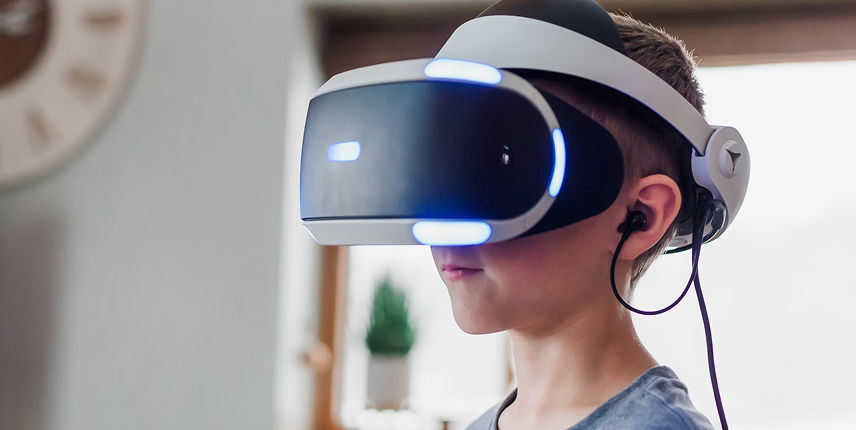The retail world is in the middle of a technological revolution — and augmented reality (AR) is at the heart of it. What once sounded like science fiction is now transforming the way consumers browse, interact, and buy products both online and in-store.
From trying on a pair of virtual sneakers to seeing how a sofa would look in your living room before buying it, AR is bridging the gap between physical and digital shopping. As the boundaries blur, retailers are discovering that AR is not just a novelty; it’s becoming a key tool for engagement, trust, and ultimately, conversion.
In this article, we’ll explore how augmented reality is shaping the future of retail experiences, the technology behind it, its benefits, and what’s next for brands that embrace it.
What is Augmented Reality in Retail?
Augmented reality overlays digital elements — such as images, text, and 3D models — onto the real world, typically through a smartphone, tablet, or AR glasses. Unlike virtual reality (VR), which immerses users in a completely digital environment, AR enhances the real world rather than replacing it.
In retail, this means customers can visualize products in their environment or on themselves before purchasing. Whether it’s using an AR app to “try on” makeup, preview furniture placement, or explore an interactive product manual, AR creates a hybrid shopping experience that’s both convenient and engaging.
Some popular examples include:
- IKEA Place, which lets users see how furniture fits in their space at true scale.
- L’Oréal’s Virtual Try-On, allowing customers to test lipstick shades or hair colors through their phones.
- Nike Fit, which uses AR to scan a shopper’s foot and suggest the perfect shoe size.
Why AR Matters for Modern Retail
Retail has always been about experience. The tactile feel of fabrics, the ability to test products, the visual appeal of a store — these are elements that digital commerce struggled to replicate. AR changes that by offering a new level of interactivity and personalization that can even surpass the traditional in-store experience.
Here’s why AR is becoming essential for retailers:
- Reducing Purchase Uncertainty
AR helps customers visualize exactly what they’re buying, reducing doubts that often lead to cart abandonment. For example, shoppers can see how a sofa fits in their living room or how glasses suit their face shape. - Boosting Engagement and Dwell Time
Interactive AR experiences capture attention. Users spend more time engaging with products, which increases brand recall and purchasing intent. - Lower Return Rates
With a clearer idea of what they’re buying, customers are less likely to return products. Retailers using AR have reported return rate reductions of up to 25%. - Bridging Online and Offline Channels
AR creates a unified shopping experience. Customers can discover products online, preview them in their space, and finalize the purchase either digitally or in-store.
The Technologies Powering AR in Retail
Behind every smooth AR experience is a combination of cutting-edge technologies. Let’s break down the essentials:
- 3D Modeling & Rendering: Realistic product models are the foundation of AR experiences. Retailers now invest in creating high-quality 3D assets for their catalogs.
- AI & Computer Vision: Artificial intelligence helps recognize physical spaces and track objects so that digital elements appear naturally integrated into the environment.
- Spatial Mapping: Using sensors or cameras, AR apps can map real-world surfaces, like walls or tables, to position digital objects accurately.
- Mobile Hardware & Cloud Computing: Smartphones with advanced cameras and cloud processing enable complex AR interactions to happen in real time.
These technologies are becoming more accessible, allowing even small retailers to adopt AR through platforms like Shopify AR or Snap’s Lens Studio.
How AR is Transforming the Shopping Journey
The traditional buyer journey — awareness, consideration, decision — is evolving with AR integration. Here’s how:
1. Awareness: Standing Out in a Crowded Market
AR-powered ads are already changing the way consumers discover brands. For example, Snapchat and Instagram offer AR filters that let users interact with branded content. Instead of seeing a static image, users can “try” a product virtually — a far more memorable and shareable experience.
2. Consideration: Trying Before Buying
This is where AR shines brightest. When customers can visualize how a product fits their lifestyle, hesitation decreases. Beauty brands, fashion retailers, and furniture companies are leading the way here, letting shoppers test shades, styles, or sizes digitally.
3. Decision: Making Confident Purchases
AR gives customers the assurance they need to click “buy.” A study by Deloitte found that AR can increase conversion rates by up to 40% because it builds confidence in the purchase decision.
AR in Physical Stores: Enhancing the Brick-and-Mortar Experience
While AR is most commonly associated with online shopping, its impact in physical retail spaces is just as exciting.
Imagine walking into a store, pointing your phone at a product, and instantly seeing reviews, usage tutorials, or related items pop up.
Brands are already experimenting with:
- Interactive product labels that reveal extra information when scanned.
- Smart mirrors in fitting rooms that let customers change outfit colors virtually.
- AR navigation in large stores or malls, guiding users to product locations.
This blend of physical and digital — often called “phygital” — makes shopping more efficient and immersive.
Case Studies: Brands Leading the AR Revolution
IKEA
A pioneer in AR, IKEA’s “Place” app lets customers preview furniture in their homes with accurate scale and lighting. It has drastically reduced uncertainty and returns, while boosting engagement.
Sephora
Sephora’s Virtual Artist allows users to try on makeup virtually. The tool not only improves conversion but also gathers valuable data on user preferences for personalized marketing.
Warby Parker
The eyewear brand uses AR to let customers virtually try on frames. Their app has become a major conversion driver, especially for users hesitant to buy glasses online.
Adidas
Adidas introduced AR-driven pop-up stores where users can scan shoes to unlock interactive storytelling about the design, materials, and athletes who wear them.
Challenges and Limitations
Despite its potential, AR adoption in retail isn’t without obstacles:
- High Initial Costs: Developing realistic 3D assets and AR experiences can be expensive, especially for large product catalogs.
- Technical Barriers: Not all users have devices capable of running AR smoothly.
- User Education: Many shoppers still need guidance on how to use AR features effectively.
- Privacy Concerns: As AR apps access cameras and spatial data, brands must ensure robust privacy policies.
However, these challenges are gradually being mitigated as technology advances and consumer familiarity grows.
The Future of AR in Retail
The next stage of AR goes beyond smartphones. With the rise of AR glasses and wearables — like Apple Vision Pro or Meta Quest 3 — the retail experience will become even more seamless.
Imagine walking through your living room and seeing virtual product suggestions appear as you look at your furniture, or scanning your wardrobe to get outfit recommendations.
AR will evolve from being a “feature” into an integrated layer of everyday shopping.
Moreover, as artificial intelligence merges with AR, the technology will become smarter. Personalized AR recommendations based on style, preferences, and previous purchases will redefine how brands connect with customers.
Conclusion: A New Era of Experiential Retail
Augmented reality is no longer a futuristic concept — it’s here, reshaping how we shop, interact, and connect with brands. It turns passive browsing into active exploration, enabling consumers to experience products before buying them.
For retailers, AR isn’t just a marketing tool; it’s a bridge between trust and technology. As expectations rise and competition intensifies, those who integrate AR thoughtfully will stand out in the crowd.
The future of retail belongs to those who can make shopping not just transactional, but experiential — and AR is the key to unlocking that transformation.


